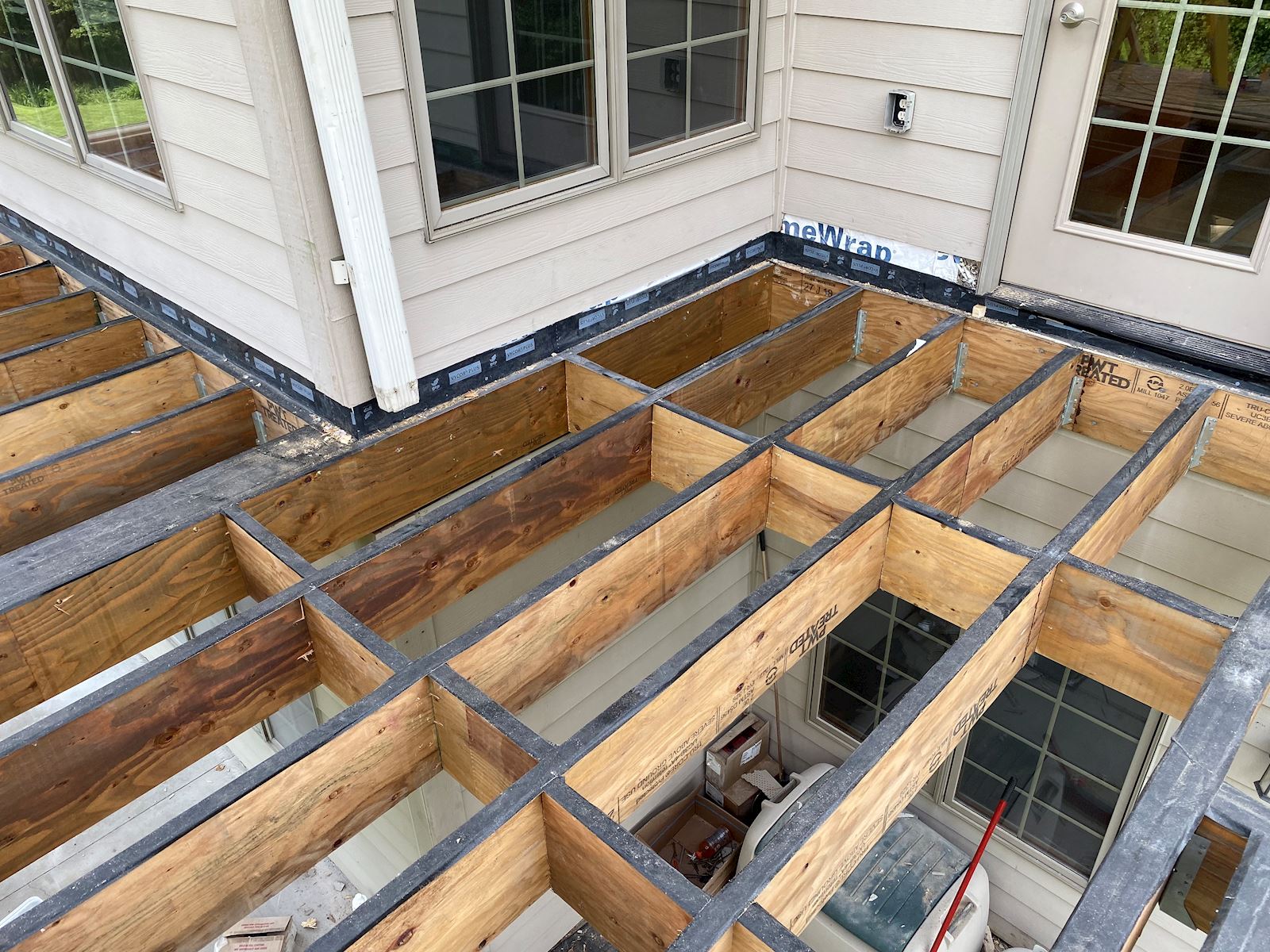Why Protecting a Deck Foundation Matters
posted
on Saturday, March 4, 2023
in
Blog
Whether your deck is composite or wood, it will likely have a wood foundation. So, while we think about maintaining the deck’s surface and keeping it clean and protected from the weather, let’s not forget about your deck’s foundation.
PHOTO:
The deck’s foundation, or substructure, may start to rot after about eight or nine years. Rotting can happen even with pressure-treated lumber. Therefore, to ensure your deck lasts a long time, take steps to protect your deck and its foundation. You can do several things to keep your deck looking good and staying structurally solid. Regularly clean your deck, protect it with sealant, and consider using butyl tape to keep out moisture.
Cleaning and Sealing
Let’s start with the surface of your deck. Remove furnishings, and any planters on the deck’s surface, sweep up debris, and don’t forget anything that’s fallen between the deck boards. If you have a wood deck, sand any rough spots. Also, if there is a need for wood filler, this is the time to apply it. Next, clean your deck. Depending on the material, you may use a low-powered pressure washer or a scrub brush and bucket. If you go the pressure washer route, set the psi below 1500.
You can make a cleaning solution with some household items, or a store-bought deck cleaner can also work well. After cleaning, rinse and let the deck completely dry. The best weather to seal a wood deck is a dry, warm day, with temperatures above 50-55° F. In fact, 60° to 80° seems to be the sweet spot for sealing.
Pick a high-quality sealant, so it spreads evenly and lasts longer. You can choose a sealant with a stain or a clear sealant. Stir it; do not shake it – as shaking it will cause bubbles. Apply with either a brush, a paint spray nozzle, or a roller. Usually, two or possibly three thin and even coats will do. Make sure you allow the sealant to dry in between applying coats.
Sealing will help preserve your deck – be it cedar or pine– and will protect it from the sun’s rays and the effects of humidity. If you live in a more humid environment, deck sealer might need to be applied more often. Otherwise, it usually is once every two or three years. If you have a composite deck, please see next months article on cleaning composite and PVC decks.
Butyl Tape
Let’s discuss a lesser-known aspect of protecting your deck’s foundation. What is butyl tape? It is an adhesive and a protectant, and this type of flashing tape is ideal for your deck’s substructure. Butyl tape comes tailored to match the surface where it will be applied. In this case, a wood application is the material. You want butyl tape that is not too thick and not too thin.

Butyl tape will protect your deck and add years to its life. In addition, this type of tape will form a protective barrier that helps your deck keep moisture out and prevents warping and mildewing. Deck builders like butyl tape not only because of its ability to protect but because it easily adheres to a deck’s surface; it can function in various temperatures and augment deck joists and fasteners.
This type of tape creates an airtight seal and flows well around the screws and deck fasteners. Installing this tape when building your deck is a small investment that is worth it. Flashing or butyl tape is easy to install, and some brands have a 20-year warranty. Another advantage of butyl tape is that it will help make your deck’s substructure resistant to splitting because of freezing temperatures.
Painting versus Staining
Most homeowners with Trex or composite decks will find cleaning sufficient. However, those who have wooden decks may like the option of painting. If you choose a paint option, then it’s possible to use an anti-fungal paint. This will also help protect your boards from moisture, rot, and warping. Anti-fungal paints are particularly beneficial for hot and humid climates. Additionally, this paint can be advantageous when winter brings a lot of snow.
Again, painting your deck’s surface is unnecessary unless you want it to be a different color. Instead, we recommend cleaning the deck regularly, sealing it, and using flashing tape on the deck’s foundation. Additionally, protecting your joists, which support your deck, is essential. They’re the horizontal wooden structures just under your deck’s boards. The beams are the vertical wooden “posts” secured into the ground, usually by cement.
As you can see, protecting your deck’s substructure or foundation will give your deck longevity. Ensuring the underlying wood is clean and mold-free will guarantee your deck will remain a stable structure and be a fun part of your household outdoor activities for a long time.